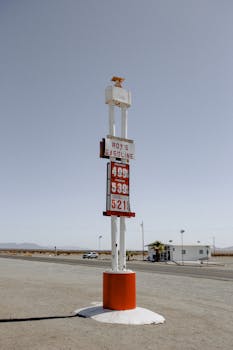
India's Petrol Price Puzzle: Why Indians Pay Rs 21 More Than Pakistan & the US
Indians are currently paying significantly more for petrol than citizens in many other countries, including Pakistan and the United States. The price disparity, hovering around Rs 21 per litre compared to these nations, has sparked widespread debate and frustration. This article delves into the complex factors contributing to this significant difference, examining the role of taxation, refining costs, international crude oil prices, and government policies. Understanding these elements is crucial to grasping the full picture of India's fuel pricing mechanism.
The Price Discrepancy: A Stark Reality
The current price difference between petrol in India and its counterparts in Pakistan and the US isn't just a matter of fluctuating global oil prices. While international crude oil prices undeniably play a role, other significant factors contribute to the higher prices faced by Indian consumers. This includes the high level of taxation imposed on petrol in India.
Comparative Petrol Prices (Approximate):
- India: Rs. 100+ per litre (varies by state)
- Pakistan: Rs. 79 per litre (approx. conversion)
- USA: $3.00-$4.00 per gallon (approx. Rs. 235-315 per litre) Note: USD to INR conversion fluctuates. This is an approximation based on current exchange rates.
It's important to note that direct price comparisons require considering the variations in exchange rates and local taxation structures. While the US price per gallon seems higher initially, the difference in volume (1 gallon ≈ 3.78 litres) needs to be factored in for a fairer comparison.
Decoding India's High Petrol Prices: Key Factors
Several factors intertwine to explain the elevated petrol prices in India:
1. High Taxation: The Major Contributor
India's central and state governments levy significant excise duties and value-added taxes (VAT) on petrol. These taxes constitute a substantial portion of the final retail price. The government utilizes this revenue for various public welfare schemes and infrastructure development. However, the high tax burden directly impacts the consumer's pocket.
- Excise Duty: Levied by the central government.
- VAT: Levied by individual state governments, leading to price variations across states.
- Dealer Commission & Other Charges: Add further to the final price at the pump.
Changes in these taxes directly influence petrol prices, offering the government a powerful tool to manage revenue and potentially moderate price fluctuations. However, the current high tax structure significantly contributes to the price disparity compared to other nations.
2. Refining Costs and Infrastructure: A Bottleneck
India's refining infrastructure, while improving, still faces challenges. The cost of refining crude oil into petrol adds to the final price. Factors like transportation, storage, and distribution also play a role. Modernizing refineries and improving logistical efficiency could potentially reduce costs in the long term.
3. International Crude Oil Prices: A Global Influence
While India is not entirely immune to global crude oil price fluctuations, the impact is magnified by the aforementioned taxation and refining costs. A surge in international crude oil prices automatically translates to higher petrol prices in India, although not in direct proportion. The government’s balancing act between protecting consumers and maintaining revenue streams adds complexity to the scenario.
4. Import Dependency: A Vulnerability
India is heavily reliant on importing crude oil, making it vulnerable to global market volatility. This dependence on imports increases the vulnerability of petrol prices to international market forces and exchange rate fluctuations.
5. Subsidies and Price Control: A Balancing Act
While subsidies are less prevalent now compared to the past, government policies surrounding price control and potential subsidies play a vital role in influencing petrol pricing. Any shift in these policies can directly impact the final price at the pump.
Potential Solutions and Future Outlook
Addressing the high petrol prices in India requires a multi-pronged approach:
- Optimizing Taxation: Evaluating the current taxation structure and exploring possibilities for a more balanced approach that reduces the burden on consumers without significantly impacting government revenue.
- Investing in Refining Infrastructure: Modernizing refineries and optimizing logistics to enhance efficiency and reduce refining costs.
- Enhancing Domestic Production: Increasing domestic crude oil production to reduce reliance on imports.
- Promoting Alternative Fuels: Investing in research and development of alternative fuels like biofuels and ethanol, thereby reducing dependence on fossil fuels.
- Fuel Efficiency Improvements: Encouraging the use of fuel-efficient vehicles and promoting public transportation.
The high petrol prices in India represent a multifaceted challenge. Understanding the various contributing factors, from taxation to international market forces, is crucial for formulating effective strategies to alleviate the burden on consumers while ensuring energy security for the nation. The government's approach to balancing economic considerations with the needs of its citizens will significantly shape the future of fuel pricing in India.




















